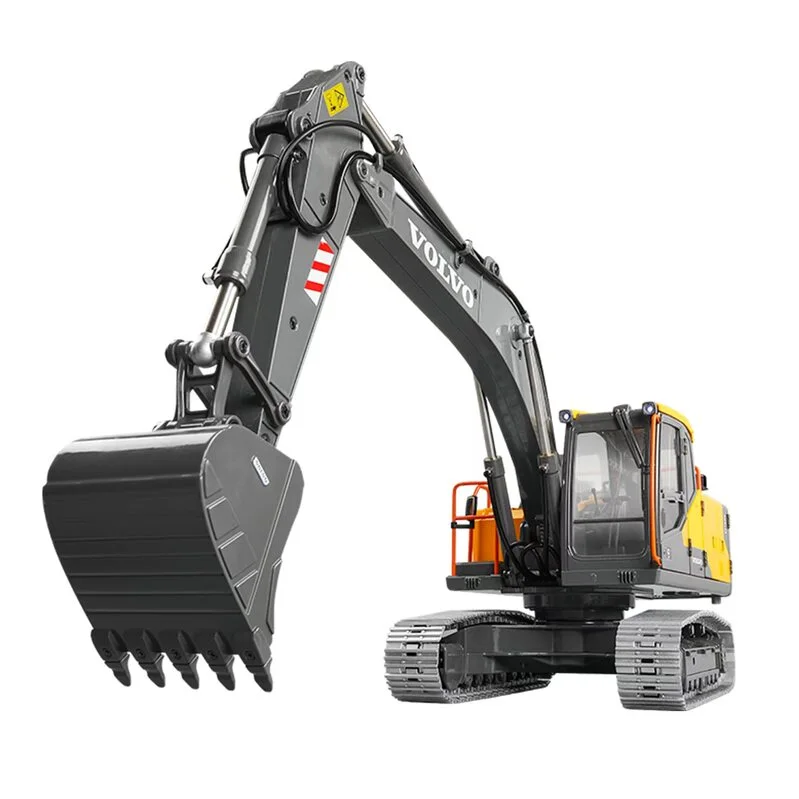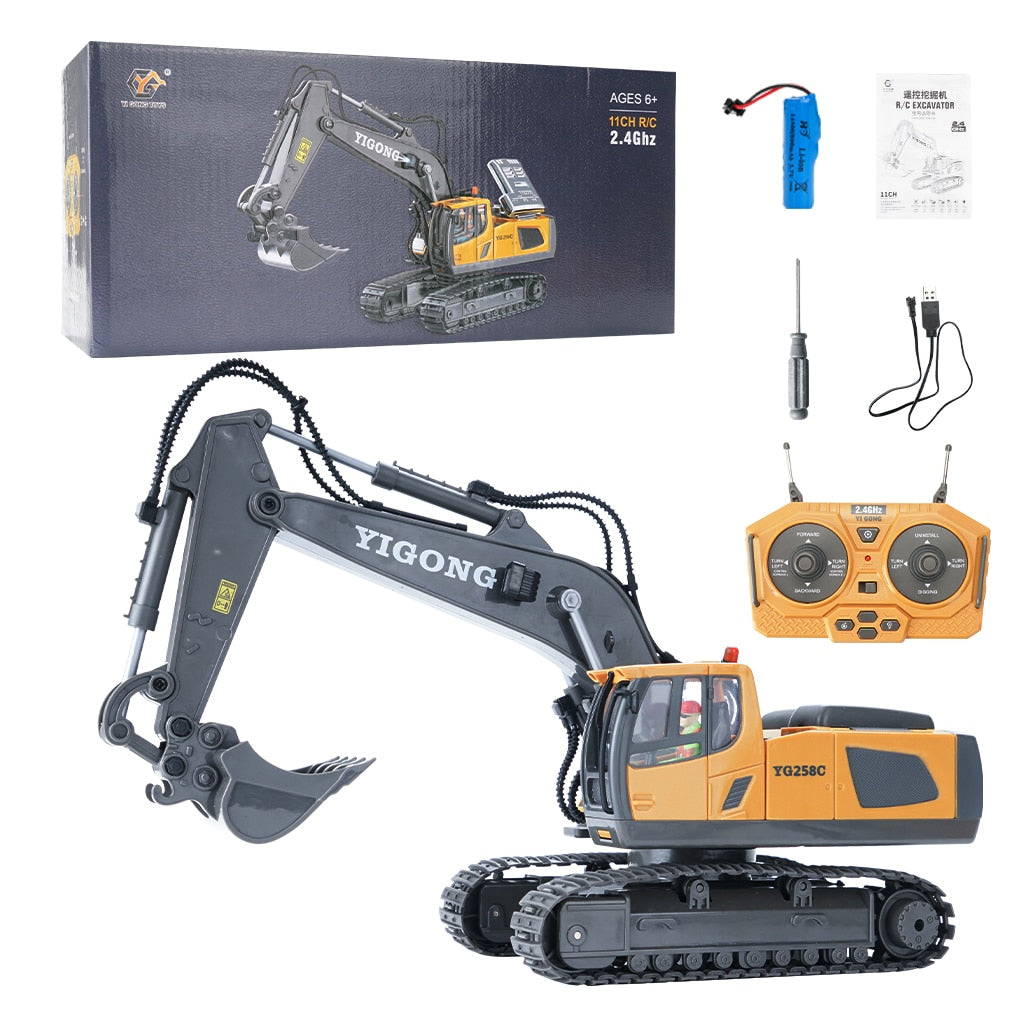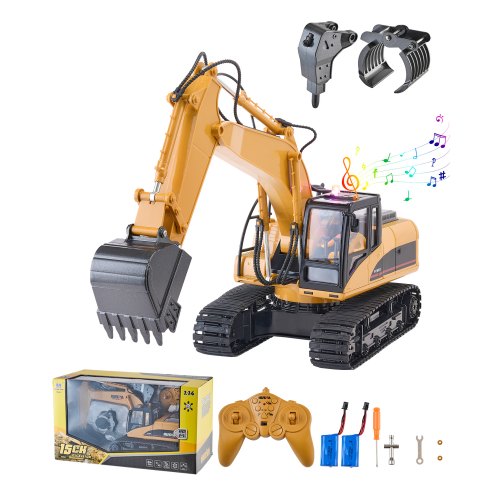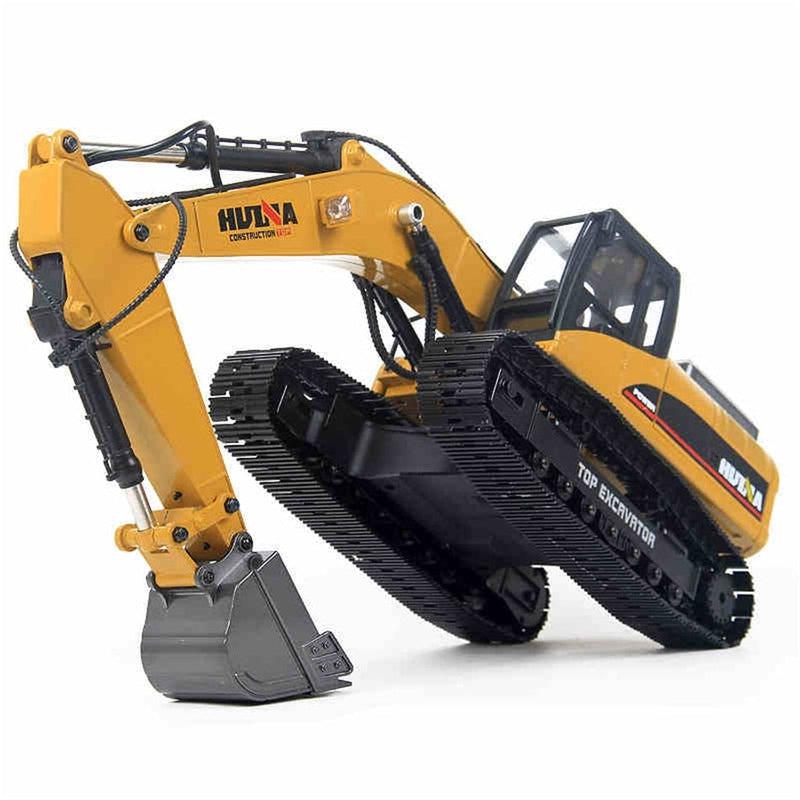The Necessary Features of Excavator That Keep It a Must-Have Tool
Excavators are crucial in the construction and landscape design markets. Their versatile accessories permit a variety of jobs, from digging to demolition. Furthermore, they boast remarkable digging deepness and reach, powered by durable engines. Operator convenience and small layouts improve usability in various atmospheres. However, what absolutely sets excavators apart are their sophisticated hydraulic systems and durability. Comprehending these attributes can clarify why they are considered necessary devices on any work website.
Flexible Attachments for Boosted Capability
Although excavators are powerful devices by themselves, the enhancement of functional attachments substantially improves their capability. These attachments transform a basic excavator right into a multi-purpose tool, suitable for a range of jobs. Buckets, for example, come in numerous sizes and shapes, making it possible for drivers to dig, scoop, and relocate materials successfully. Hydraulic thumbs can be included for improved gripping and handling of large products, such as logs or rocks.Furthermore, specialized attachments like breakers and augers allow for drilling and demolition job, increasing the excavator's energy on building sites. remote control excavator. Grapples are one more option, perfect for sorting and moving particles. This adaptability not just enhances efficiency yet additionally decreases the requirement for several equipments, conserving time and costs. By furnishing excavators with the best attachments, operators can deal with varied tasks, making them vital in the construction industry
Superior Excavating Depth and Get To
Excavators are made with superior excavating deepness and reach, allowing them to navigate in limited rooms and gain access to hard-to-reach areas. This capacity is crucial for numerous building and excavation tasks, where typical machinery might fall brief. With flexible boom arms and extendable tracks, excavators can quickly navigate irregular surface while keeping stability.The digging deepness can differ substantially among models, frequently ranging from 10 to 25 feet, depending upon the design and purpose. This attribute allows operators to excavate structures, trenches, and various other deep structures efficiently. In addition, the reach of an excavator enables exact digging and product handling without repositioning the equipment frequently, saving time and labor costs.Ultimately, the premium digging deepness and reach of excavators make them indispensable for specialists seeking to complete complicated jobs with precision and efficiency. Their adaptability boosts productivity on job websites, showcasing them as an important device in contemporary building and construction.
Powerful Engine Performance

When it concerns efficiency and productivity on building websites, powerful engine efficiency plays an essential role in the capabilities of an excavator. A robust engine generates substantial horse power, enabling the maker to deal with sturdy tasks easily - remote control excavator. This toughness converts into faster cycle times, making it possible for drivers to total projects more quickly.Additionally, powerful engines provide the necessary torque to handle challenging terrains and varied loads, making sure that the excavator can carry out efficiently under various problems. Whether it is raising, excavating, or moving materials, the engine's efficiency straight impacts the total functional efficiency of the machine.Furthermore, improvements in engine technology have brought about boosted gas effectiveness, lowering functional prices while preserving power result. Ultimately, the engine's efficiency works as the foundation of an excavator, verifying its condition as an indispensable tool in the construction industry
Advanced Hydraulic Solutions

Boosted Raising Ability
A significant enhancement in lifting ability can be connected to advanced hydraulic systems discovered in modern-day excavators. These systems make use of high-pressure liquid to create greater force, enabling operators to lift much heavier loads easily. The design behind these hydraulics guarantees peak performance, providing an excellent power-to-weight proportion that enhances general performance. Because of this, excavators can deal with demanding tasks, such as raising huge products or equipment, without jeopardizing security. Furthermore, the robust style of hydraulic components adds to increased resilience and dependability, making them appropriate for different building and construction settings. This enhanced training capacity not just decreases the moment needed for jobs however also reduces the requirement for extra machinery, showing crucial for both efficiency and cost-effectiveness in the building and construction market.
Enhanced Precision Control
Although standard excavators typically battled with accuracy, modern hydraulic systems have changed control systems, enabling drivers to carry out tasks with remarkable accuracy. These advanced systems use symmetrical control shutoffs that enable smoother and extra receptive movements, considerably lowering the margin for error. Operators can now carefully tune the excavator's movements, making it much easier to navigate tight spaces and handle fragile materials. Enhanced feedback systems even more educate operators of real-time performance, guaranteeing suitable control between the equipment and operator. This raised accuracy not just enhances effectiveness yet additionally boosts safety on work websites, lessening the threat of mishaps. Because of this, modern excavators outfitted with advanced hydraulic systems are very useful devices for building and excavation tasks calling for careful accuracy.
Driver Convenience and Visibility
Operator comfort and exposure are vital components in the style of modern excavators (remote control excavator). Features such as ergonomic seat design, enhanced exposure alternatives, and efficient control designs greatly boost the driver's experience and performance. Focusing on these aspects warranties that operators can work properly and safely in various conditions
Ergonomic Seat Design
Comfort and presence are extremely important in excavator layout, with the ergonomic seat playing a crucial duty in boosting the driver's experience. An ergonomic seat is crafted to sustain the driver's body, reducing fatigue during lengthy hours of procedure. Flexible attributes, such as seat elevation, backrest angle, and lumbar support, deal with specific choices and advertise suitable position. These modifications boost convenience and enable the operator to keep concentrate on jobs without pain. Furthermore, a properly designed seat can offer better lateral support, enabling smoother handling when the excavator is in procedure. This thoughtful layout not just boosts productivity but additionally contributes to overall safety and security, ensuring that operators can perform their duties effectively and successfully.
Improved Presence Features
The layout of an excavator expands beyond just the seat, with boosted visibility functions playing a considerable duty in driver comfort and general safety and security. Large windows and purposefully positioned mirrors offer drivers with a clear view of their environments, lessening blind areas. This style consideration permits better spatial recognition, which is crucial in hectic workplace. On top of that, several excavators integrate rearview cameras and advanced tracking systems that aid drivers in maneuvering limited areas. The assimilation of these visibility features not just promotes safety find out here now but also decreases driver fatigue by enabling simpler monitoring of workplace. Inevitably, improved exposure adds to a lot more efficient procedures and assists guarantee that excavators can perform their tasks properly and securely.
Control Design Efficiency
While handling facility job sites, an effective control format significantly enhances both driver convenience and exposure. A properly designed control configuration warranties that drivers can access vital features with very little initiative, minimizing fatigue during lengthy hours. Ergonomic joystick placements and user-friendly switch plans allow for seamless procedure, enabling drivers to preserve concentrate on the job available. In addition, clear exposure of both the workspace and the control panel is essential for safety and accuracy. Modern excavators frequently integrate flexible seating and control setups to fit various driver preferences, better boosting comfort. Inevitably, a thoughtfully developed control layout not only improves performance however additionally fosters a much safer working environment by enabling drivers to react swiftly to changing conditions.
Compact Layout for Urban Environments
As metropolitan building and construction websites usually face area restrictions, a compact layout becomes necessary for excavators running in these environments. These equipments are engineered to navigate limited areas, enabling for reliable ability to move in jampacked task websites. A reduced impact allows them to function closely to existing frameworks, decreasing interruption and taking full advantage of productivity.The small style often includes much shorter tracks and a tighter transforming radius, promoting procedure in narrow alleys and confined areas. Lightweight materials add to alleviate of transport, making it simpler to relocate the excavator from one area to an additional within the city landscape.Additionally, many small excavators are equipped with features such as extendable arms and flexible attachments, enhancing their functionality while preserving a tiny size. This versatility enables drivers to tackle a why not check here variety of tasks, from digging to demolition, all while suitable seamlessly right into the restraints of city atmospheres.

Sturdiness and Maintenance Considerations
Durability stands as a necessary consider the efficiency and long life of excavators, particularly popular metropolitan atmospheres. These equipments are subjected to extensive problems, including differing soil types, extreme temperatures, and high-frequency use. Top notch materials and robust building and construction are needed for guaranteeing that excavators can withstand these challenges without jeopardizing functionality.Regular maintenance is similarly essential in maintaining longevity. Arranged examinations, prompt oil changes, and the substitute of used parts add significantly to an excavator's life expectancy. Operators has to additionally take note of hydraulic systems, tracks, and undercarriages, as these parts typically bear the burden of wear and tear.Investing in long lasting excavators with substantial upkeep plans boosts reliability and decreases downtime, eventually bring about increased performance on building and construction websites. For that reason, understanding the interplay in between toughness and upkeep is crucial for any person taking into consideration the procurement of an excavator for urban projects.
Frequently Asked Concerns
Exactly How Do Excavators Contrast to Various Other Building Tools?
Excavators stand apart amongst construction tools due to their versatility, allowing tasks such as grading, excavating, and lifting. Compared to others, their hydraulic capacities provide better effectiveness and power, making them vital on various task websites.
What Security Includes Are Consisted Of in Modern Excavators?
Modern excavators incorporate numerous safety and security attributes, consisting of rollover security systems, alarms, and progressed presence improvements. These components work together to reduce risks, ensuring operator safety and security while boosting effectiveness on building sites and other requiring environments.

Can Excavators Be Utilized in Winter Season Issues?
Excavators can without a doubt be used in wintertime conditions, given they are furnished with appropriate winter season accessories and precautions are taken. Proper maintenance and modifications improve their performance, ensuring efficient operation regardless of challenging weather circumstances.
What Is the Typical Life-span of an Excavator?
The average life expectancy of an excavator generally ranges from 7,000 to 10,000 hours of procedure. This period can significantly rely on maintenance techniques, running problems, and the specific design's durability and design features.
Exactly how Do I Choose the Right Excavator Size for My Project?
Picking the right excavator size includes assessing project extent, website problems, and material kinds. Think about aspects like reach, depth needs, and weight ability to ensure optimal performance and security during procedure. Dimension matters substantially in job success. Additionally, the reach of an excavator enables for exact digging and material handling without rearranging the device regularly, saving time and labor costs.Ultimately, the exceptional digging deepness and reach of excavators make them essential for professionals seeking to complete complicated jobs with accuracy and efficiency. Convenience and exposure are extremely important in excavator style, with the ergonomic seat playing a crucial duty in boosting the driver's find out here experience. The layout of an excavator prolongs beyond simply the seat, with enhanced presence features playing a considerable role in operator convenience and overall safety. Modern excavators often include flexible seats and control settings to accommodate numerous operator preferences, better boosting convenience. Light-weight materials add to reduce of transportation, making it less complex to relocate the excavator from one location to an additional within the urban landscape.Additionally, lots of small excavators are geared up with functions such as functional accessories and extendable arms, improving their functionality while keeping a tiny size.